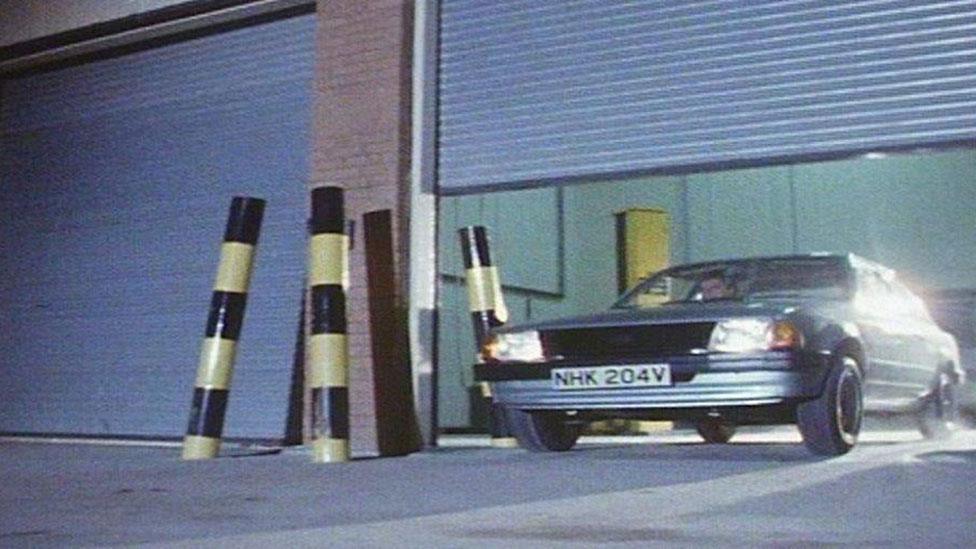Coronavirus: Bridgend Ford return to work marks 40 years
- Published

The new Ford Escort on the M4 near Bridgend in 1980
Ford's engine plant in Bridgend is restarting production after a nearly two-month shutdown due to the coronavirus pandemic.
Its 1,200 strong workforce has been on furlough since 25 March but this final return to work - with the factory due to close for good in September - also marks its 40th anniversary.
When the plant opened in May 1980, it was seen as an industrial landmark in which the car was overtaking coal in Wales.
There were still 30,000 working in mining, but 700 jobs at the Lewis Merthyr colliery in the Rhondda were under threat. It is now a museum.
There were already about 30 car component companies in south Wales when Bridgend - thanks partly to the personal intervention of then-Prime Minister James Callaghan - won the prize.
The Ford announcement in 1978 was described in the South Wales Echo as "the icing on an already substantial cake" for the automotive sector.
The story behind how the Ford engine plant in Bridgend was built between 1977 and 1980.
The CBI at the time estimated 25,000 were employed in the car industry in Wales, with a turnover of £350m.
Borg-Warner, which made automatic transmissions at Kenfig near Bridgend, had already opened Wales' first 1m sq ft factory, with jobs for more than 1,200 people. Most of its products went to Volvo in Sweden.
There were others too, supplying British Leyland - which had two of its own firms in Cardiff and Llanelli, making gearboxes and radiators.
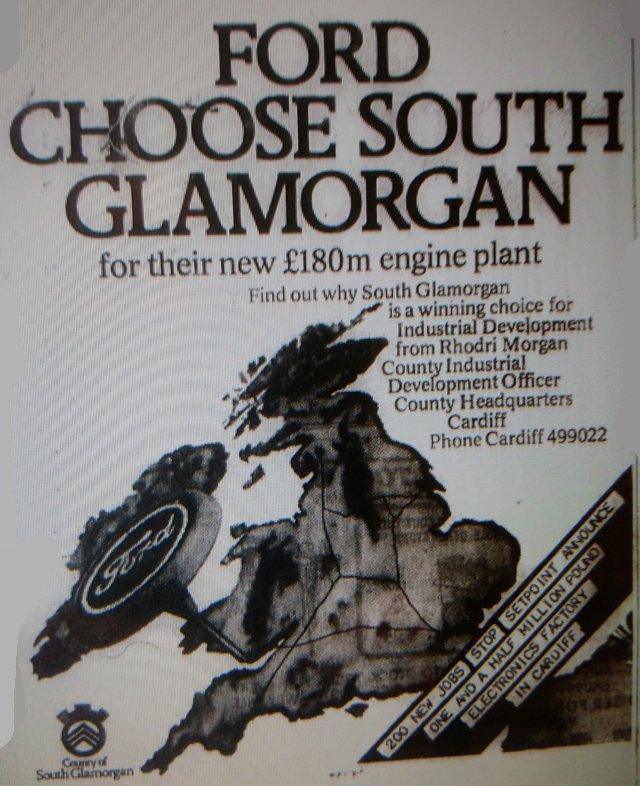
Although Ford was in Mid Glamorgan, it did not stop neighbouring South Glamorgan promoting itself as a location for business by a future first minster, Rhodri Morgan
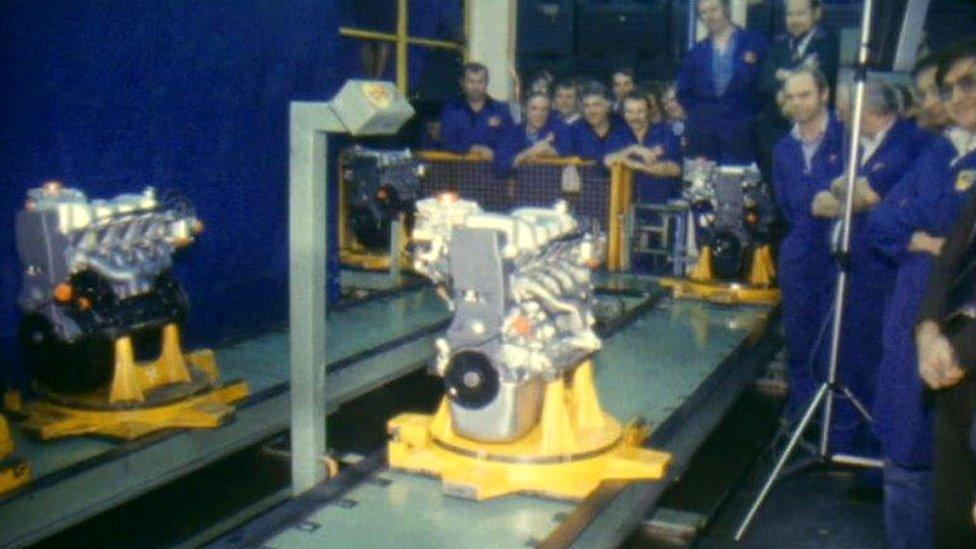
The 500,000th engine came off the production line in December 1981

Miss UK Michelle Donnelly is special guest at the plant in 1981, meeting John Owen, the first worker to be taken on in 1980
The factory opened in 1980 without fanfare at an economically uncertain time. There was a two-week long strike at local newspapers, so the event passed without comment or record.
Within a few weeks of the Bridgend plant opening, Ford announced only 1,400, not 2,500 people, would be employed there because of a slump in car sales.
British Leyland was also struggling, with £122m losses announced. Unemployment was more than double 2020's pre-coronavirus figure and inflation was running at nearly 18%.

Princess Diana pictured driving one of the news Ford Escorts in 1981
The new range of Ford Escorts - with Bridgend producing 2,000 engines a week for them - were in car showrooms by the end of September 1980.
Motorists paid £3,374 for the basic model and Princess Diana was photographed driving one a year later - by the end of the decade, it would arguably be the UK's most popular car with more than 1.6 million models on the roads.
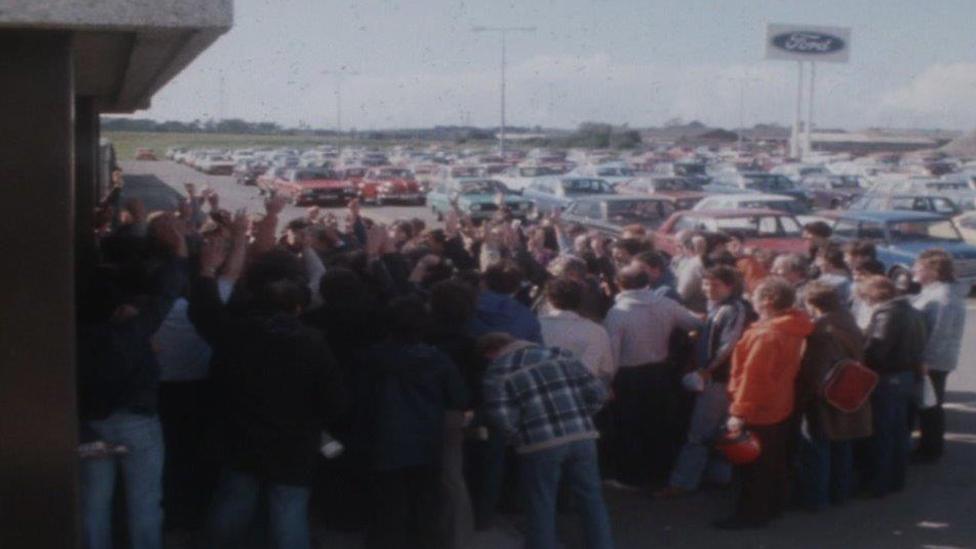
Workers voting to go back to work after a first strike in December 1981
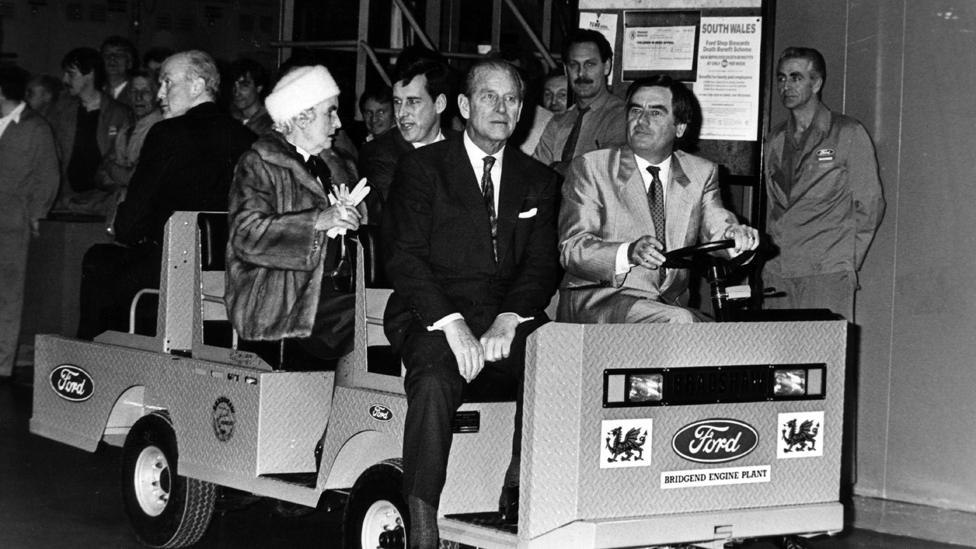
Prince Philip takes a tour around the plant in 1986
As well as changes in demand for cars and the drive for efficiencies - the past decade has seen Bridgend making engines for Ford cars made elsewhere in Europe but not in the UK.
The writing was on the wall when investment in a new petrol engine, called Dragon, was scaled back, as production was due to end for the engine Bridgend made for Jaguar Land Rover.
Ford blamed "changing customer demand and cost disadvantages" for the decision to close.
Workers react to news that Ford's engine plant will close in 2020
Today, only about a quarter of the 30 companies in the automotive sector around Ford 40 years ago still exist but have been replaced by others - there are now more than 70 components suppliers along the M4 corridor and valleys alone.
The numbers working in it have shrunk - but the automotive sector is still estimated at employing about 18,000 workers across Wales.
Ford Bridgend is re-opening quietly again on its 40th anniversary for what is destined to be a very short period. But also at an uncertain - and extraordinary - time for the whole industry.
- Published6 June 2019

- Published1 March 2017
